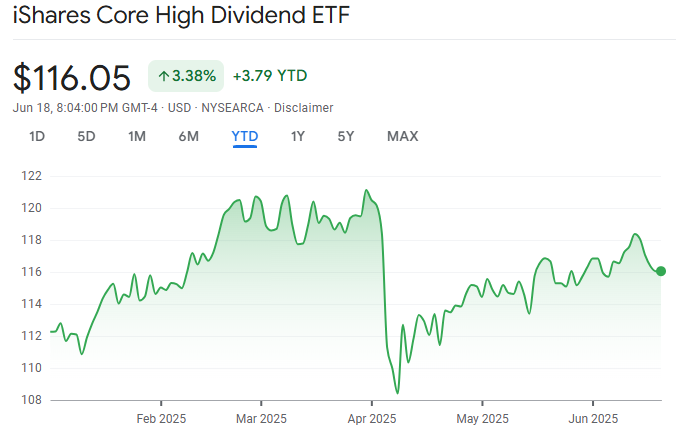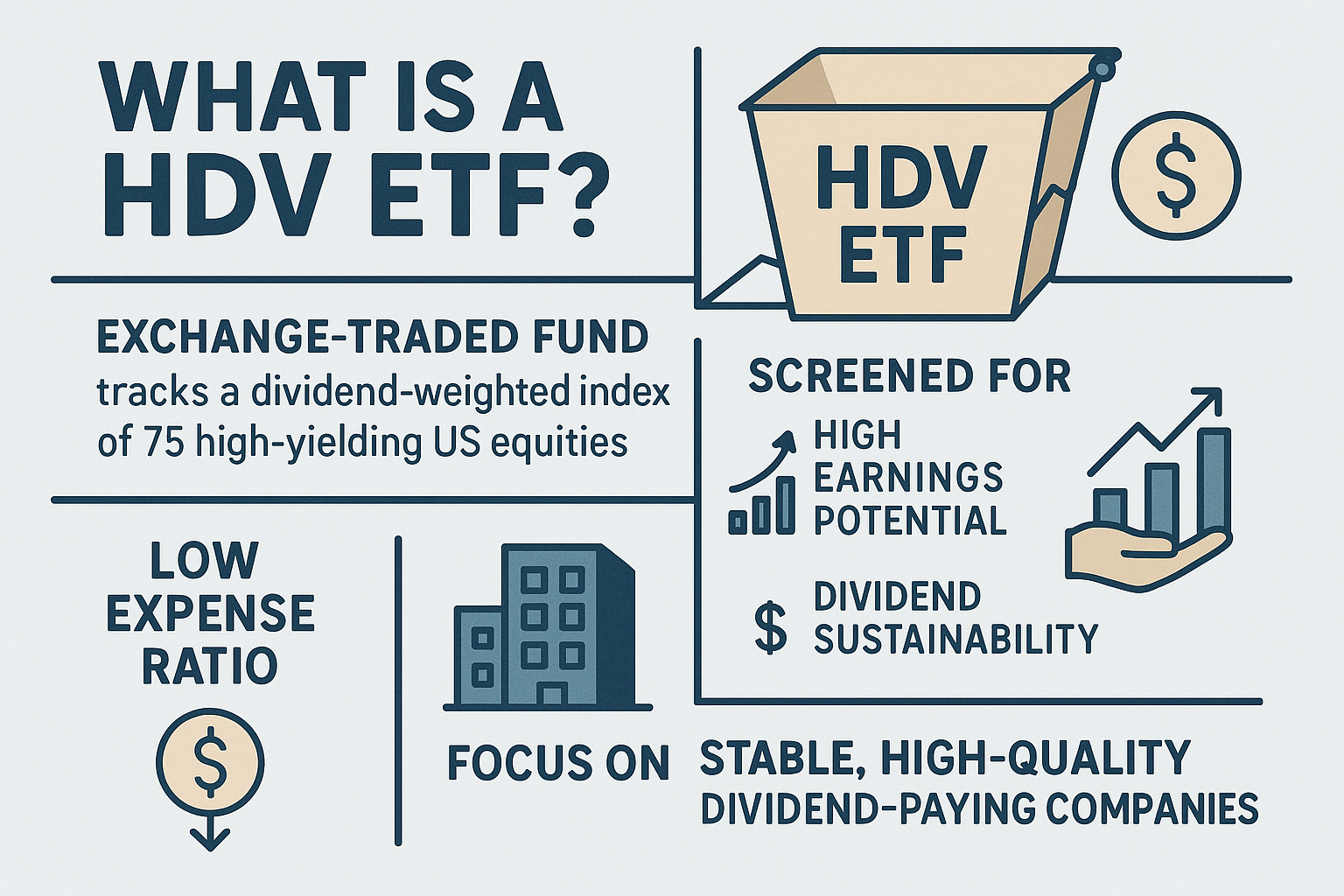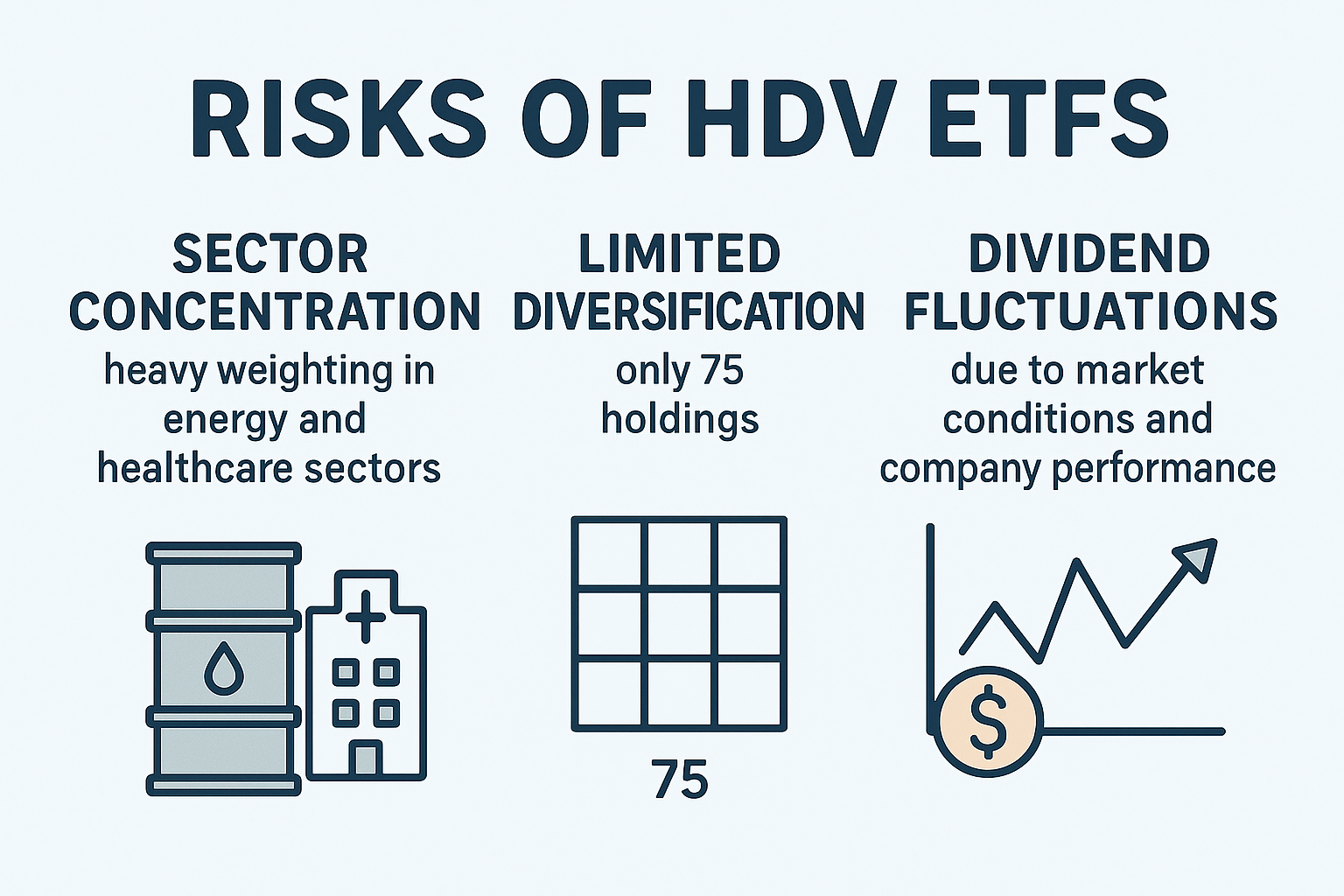Income-focused investors are always on the lookout for reliable, cost-effective ways to generate steady cash flow. The iShares Core High Dividend ETF (HDV) has become a popular choice for those seeking high-quality dividend income from U.S. equities.
In this article, we break down the best features of the HDV ETF and why it deserves a place in the portfolios of income investors and traders alike.
What Is the HDV ETF?

HDV is an exchange-traded fund that tracks the Morningstar Dividend Yield Focus Index, which is composed of 75 established, high-dividend-paying U.S. companies.
The fund screens for financial health and sustainability, focusing on blue-chip stocks across sectors like energy, healthcare, and consumer staples. With over $11.5 billion in assets under management, HDV is one of the largest and most liquid dividend ETFs on the market.
Best Features of HDV ETF

1. High Dividend Yield and Consistent Payouts
A major attraction of HDV is its robust dividend yield. As of June 2025, HDV offers a yield of approximately 3.5%, with annual dividends totalling $4.07 per share over the past year. Dividends are paid quarterly, providing regular income to investors. The fund's payout ratio of around 69% and a one-year dividend growth rate of over 10% highlight its commitment to sustainable income.
Key Points:
Quarterly dividend payments
3.5% yield, above the S&P 500 average
Strong dividend growth in recent years
2. Blue-Chip, Financially Healthy Holdings
HDV's portfolio is built around 75 U.S. companies that have been rigorously screened for financial health, competitive advantage, and dividend sustainability. Top sectors include energy, healthcare, and consumer staples—industries known for resilience and steady earnings. This focus on blue-chip stocks helps reduce risk and volatility, making HDV suitable for conservative income investors.
Key Points:
Exposure to industry leaders with stable cash flows
Emphasis on companies with strong balance sheets
Sector allocation supports defensive positioning
3. Low Expense Ratio
Cost matters for income investors, and HDV delivers with a very low expense ratio of just 0.08%. This means more of your investment returns stay in your pocket, boosting long-term income and compounding. Compared to many actively managed funds and other dividend ETFs, HDV’s fees are among the lowest in the industry.
Key Points:
4. Tax Efficiency
HDV is structured to maximise tax efficiency for U.S. investors. By excluding real estate investment trusts (REITs), all dividends paid by HDV qualify as “qualified income” under U.S. tax law, which is generally taxed at a lower rate than ordinary income. This can make a significant difference for investors in higher tax brackets.
Key Points:
5. Strong Track Record and Liquidity
HDV has delivered solid long-term returns, with a 10-year annualised return of 8.8% and a 5-year annualised return of 15.3% as of March 2025. The ETF is highly liquid, with tight bid-ask spreads and large daily trading volumes, making it easy for traders and investors to enter and exit positions efficiently.
Key Points:
How Traders and Investors Use HDV
Core Income Holding: Many investors use HDV as a core portfolio holding for reliable income.
Defensive Allocation: Its focus on defensive sectors makes it a popular choice during market uncertainty.
Dividend Growth: HDV's strong dividend growth record appeals to those seeking rising income over time.
Tactical Trading: Traders may use HDV for sector rotation or to capture dividend payments.
Risks and Considerations

While HDV offers many benefits, it's important to consider potential risks:
Sector Concentration: Heavy weighting in energy and healthcare can increase sector-specific risk.
Limited Diversification: With only 75 holdings, HDV is less diversified than broader market ETFs.
Dividend Fluctuations: Dividend payments can vary based on market conditions and company performance.
Conclusion
The iShares Core High Dividend ETF (HDV) stands out for income investors seeking a blend of high yield, low fees, blue-chip exposure, and tax efficiency. Its focus on financially healthy, dividend-paying U.S. companies makes it a compelling choice for both long-term investors and active traders. By understanding HDV's features and how it fits into your income strategy, you can build a more resilient and rewarding portfolio in 2025 and beyond.
Disclaimer: This material is for general information purposes only and is not intended as (and should not be considered to be) financial, investment or other advice on which reliance should be placed. No opinion given in the material constitutes a recommendation by EBC or the author that any particular investment, security, transaction or investment strategy is suitable for any specific person.



















